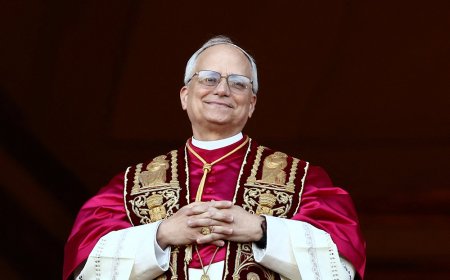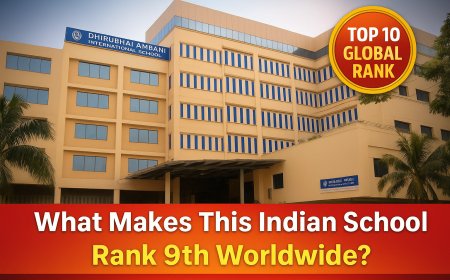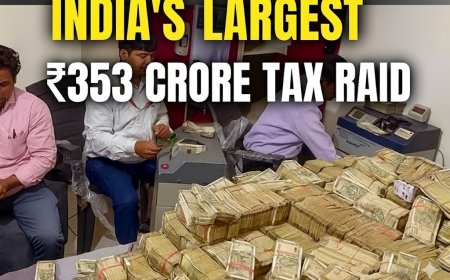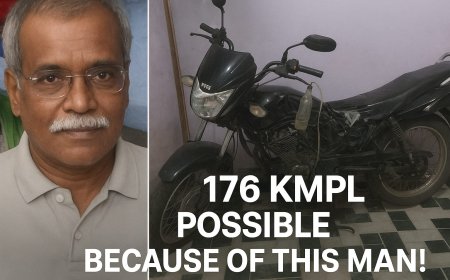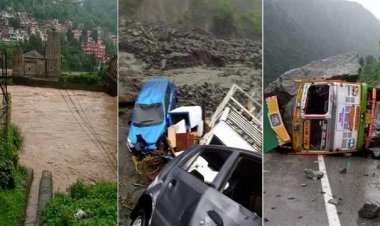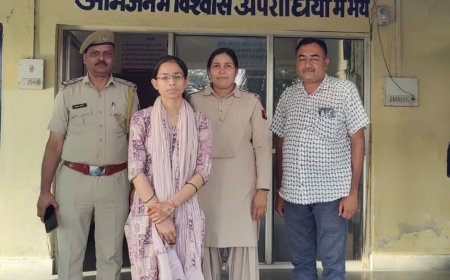Kashi Vishwanath Dham: ₹1.25 Lakh Crore Economic Boost & 25 Crore Visitors Since 2021
Discover how the Kashi Vishwanath Dham Corridor transformed Uttar Pradesh’s economy with a ₹1.25 lakh crore boost and 25 crore visitors since 2021, driving massive growth in tourism and employment.

Kashi Vishwanath Dham is one place, if any, that has entirely altered the face of the tourism sector and economy of U.P. over the past couple of years. Beyond a mere facelift of Varanasi, this religious scheme has been delivering its feat since the big opening in December 2021.
Let’s look at how Kashi Vishwanath Dham has transformed not only Varanasi but also the entire economy of Uttar Pradesh.
How Kashi Vishwanath Corridor Transformed Varanasi and Uttar Pradesh’s Economy
When Prime Minister Narendra Modi opened the Kashi Vishwanath Dham Corridor, it was seen as a spiritual milestone. But few expected it to become such a massive economic success.
In just three and a half years, the corridor has helped add around ₹1.25 lakh crore to Uttar Pradesh’s economy, as highlighted in an ABP Live economic report. It’s a remarkable figure for a project built around faith and heritage.
Since 2021, the Dham has been visited by over 25.28 crore devotees and tourists. The average expenditure of each visitor is around ₹4,000 to ₹5,000. Thus, the local economy is getting a good boost through money spent on hotel and food services, boat rides, and local crafts by each visitor.
Kashi Vishwanath Dham Tourism Boosts UP’s Economy
The real power of Kashi Vishwanath Dham lies in the tourism chain it supports. When millions of pilgrims come to Varanasi, they not only visit the temple. They explore the ghats, shop for Banarasi sarees, take boat rides on the Ganga, and taste the city’s famous street food.
With active support and promotion from the Uttar Pradesh Tourism Department, these experiences have become more organized and accessible for visitors. Each of these small activities means steady income for thousands of families, rickshaw drivers, priests, flower sellers, shopkeepers, artisans, and hotel staff.
The result? More jobs, higher earnings, and a city that’s alive round the clock.
Image Credit: Tripadvisor
Boost for Local Businesses
Kashi Vishwanath Dham has been a transformational experience for the people living in the area. Small traders that were only able to make a profit during the seasons when visitors came now have a business that is going on throughout the year.
New hotels, guest houses, restaurants, and homestays have exploded all over the city like mushrooms after rain. Small tea stalls near the ghats that were barely getting customers can now even boast of a regular crowd.
Image Credit: Varanasi Mirror
How Kashi’s Growth Spreads Across UP
Kashi's achievement was not limited to Varanasi. It led to a massive inflow of tourists to other sacred cities of Uttar Pradesh.
A large number of people, after seeing Kashi Vishwanath, proceed to Ayodhya, Mathura, Chitrakoot, Vindhyachal, and Naimisharanya. These journeys have become a well-known religious circuit; thus, the small villages are getting noticed, as well as making a profit from the tourists.
This growing network of religious destinations is turning Uttar Pradesh into India’s spiritual tourism capital.
Why Strong Infrastructure Drives UP’s Tourism Boom
The change was not accidental. The state government of Uttar Pradesh has invested a large sum of money in the improvement of roads, security, cleanliness, and connectivity.
The lights and the riverfronts have been changed, and so the ghats are looking more beautiful now. A clean environment, modern facilities, and trouble-free travel have made Kashi not only attractive to the tourists of India but also to those who are from various parts of the globe.
These changes have made it easier for tourists to explore nearby attractions, stay longer, and spend more. It’s a clear example of how good infrastructure drives tourism success.
A Model for Religious Urban Development
Kashi Vishwanath Dham is presently considered a typical Indian religious urban development project. The undertaking demonstrates that such places can generate a flourishing economy that scales up over time and is environmentally friendly.
Kashi's accomplishment is motivating comparable changes at the religious sites of the other four cities, namely, Ayodhya, Mathura, Vindhyachal, and Chitrakoot. Every one of these towns is adopting the "Kashi model" that merges the aspects of heritage, hygiene, and contemporary facilities.
 Image Credit: Ayodhya Tour Packages
Image Credit: Ayodhya Tour Packages
Final Thoughts
The story of Kashi Vishwanath Dham is more than just a tale of temple renovation. It’s proof that cultural heritage, when planned smartly, can drive real economic transformation.
From ₹1.25 lakh crore in growth to 25 crore happy visitors, Kashi has become both a spiritual and economic powerhouse. And the best part, it’s only the beginning.
Frequently Asked Questions (FAQs)
1. When was the Kashi Vishwanath Dham Corridor inaugurated?
It was inaugurated in December 2021 by Prime Minister Narendra Modi.
2. How much has the corridor contributed to Uttar Pradesh’s economy?
The project has boosted the state’s economy by around ₹1.25 lakh crore since 2021.
3. How many visitors have come to Kashi Vishwanath Dham so far?
Over 25.28 crore people have visited in the last three and a half years.
4. What is the average spending per visitor?
Tourists and devotees spend between ₹4,000 and ₹5,000 on average.
5. Who benefits from this tourism boom?
Local traders, priests, shopkeepers, hotel owners, artisans, and transport workers benefit directly.
6. Which regions do most visitors come from?
About 70% of the pilgrims are from South India, mainly Tamil Nadu, Andhra Pradesh, and Karnataka.
7. How has the project helped nearby cities?
It has created a tourism ripple effect across Ayodhya, Mathura, Vindhyachal, and Chitrakoot.
8. What new infrastructure projects are leading to major changes in Kashi?
The project revolved around the enhancement of roads, ghats, lighting, security, and the overall cleanliness aspects of the area to make it a more attractive and hospitable place for visitors.
9. Are the reported figures verified?
Yes. Data is confirmed by credible sources like ABP Live, NewsOnAir, and other national outlets.
10. What’s next after Kashi’s success?
The model is now being used to develop other spiritual hubs in Uttar Pradesh, including Ayodhya and Mathura.
What's Your Reaction?
 Like
0
Like
0
 Dislike
0
Dislike
0
 Love
0
Love
0
 Funny
0
Funny
0
 Angry
0
Angry
0
 Sad
0
Sad
0
 Wow
0
Wow
0


